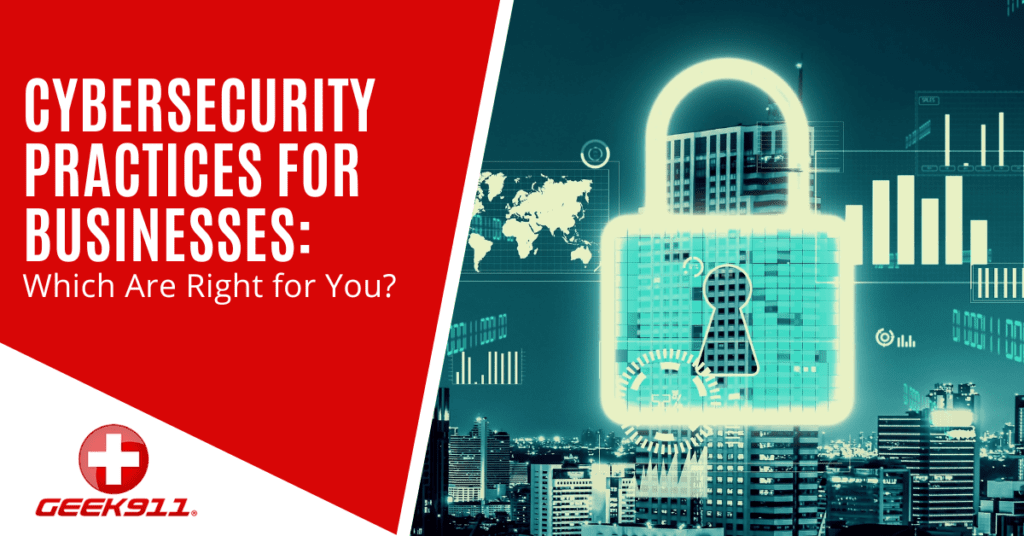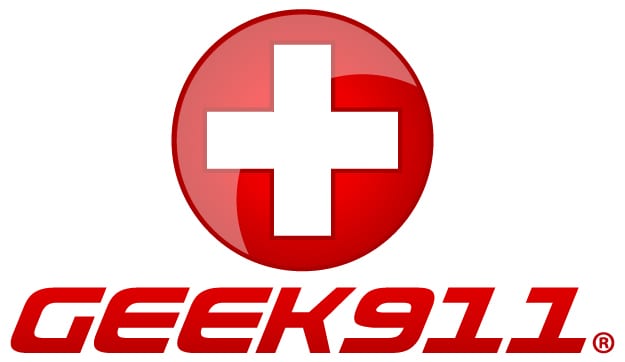Cybersecurity Practices for Businesses: Which Are Right for You?

In today’s digital age, cybersecurity is more important than ever for businesses. With so many different options and practices available, it can be difficult to know which ones are right for you.
Asking which cybersecurity option is right for your business is like asking which knife is the best for cooking. It depends on your specific needs.
However, it’s important to get familiar with your options to facilitate an educated decision that is right for your business.
Let’s take a closer look at some of the best cybersecurity options and practices available to you.
Data Backup
While data backup is one of the most important cybersecurity options for businesses, it is often overlooked. Data backup ensures that your business can continue operating even if your primary data is lost or destroyed.
Preventable data loss can occur due to hardware or software failures, malicious attacks, natural disasters, or human error.
There are two main types of data backup:
- Local backup: This type of backup plan involves storing a copy of your data on an external hard drive(s) or another local storage device, such as a NAS (Network Attached Storage).
- Cloud backup: involves storing a copy of your data on a remote server.
Security Awareness Training
Security awareness training helps employees understand how to protect themselves and the company from cyberattacks. It is important to have a comprehensive security awareness training program in place that covers topics such as:
- Phishing and Social Engineering
- Password Security
- BYOD Security.
Security awareness training should be mandatory for all employees and should be updated regularly to ensure that it is effective.
Multi-Factor Authentication
Multi-factor authentication (MFA) is a cybersecurity measure that every business should consider implementing. MFA adds an extra layer of security by requiring users to provide two or more factors when authenticating.
The most common form of MFA is two-factor authentication (2FA), which requires users to provide both a password and a one-time code.
Encryption
Encryption is a process of transforming readable data into an unreadable format. Encryption is used to protect data at rest (data that is stored on devices) and in transit (data that is being transmitted over a network).
This is beneficial for businesses as it can help to prevent data breaches and ensure that sensitive data is not compromised in the event of a breach.
Firewalls
Firewalls can be hardware, software, or a combination of both that control the incoming and outgoing traffic of a network. They are used to protect networks from malicious traffic and can be customized to allow or block specific types of traffic.
Firewalls can be an important part of a comprehensive cybersecurity strategy, however, they are not a silver bullet and should be used in conjunction with other security measures.
Intrusion Detection and Prevention Systems
Intrusion detection and prevention systems (IDPS) are used to detect and prevent malicious activity on a network. They work by monitoring network traffic and identifying patterns that are associated with malicious activity. When an anomaly is detected, the IDPS can take action to block the traffic and notify the administrator.
Access Control
Access control as a security measure is used to restrict access to a network, system, or data. There are two main types of access control:
- Physical access control: This type of access control restricts physical access to a premises or data. Examples of physical access control measures include security guards, locked doors, and security cameras.
- Logical access control: This type of access control restricts access to data and systems. Examples of logical access control measures include passwords, user accounts, and encryption.
Cybersecurity Insurance
Not all businesses will need cyber insurance, but it is something that should be considered, especially for businesses that handle consumer sensitive data. No one is safe from cybercrime, and insurance can help to mitigate the financial damages that can occur as a result of an attack. Cybersecurity insurance specifically aims to help financially protect businesses from the costs associated with cyberattacks and data breaches.
Incident Response Plan
An incident response plan (IRP) is a plan of action that outlines what should be done in the event of a security incident. The IRP should be designed before an incident occurs and should be reviewed and updated regularly.
The IRP should be designed to help businesses to minimize the damages of an incident and to resume normal operations as quickly as possible.
Assess Your Needs
There is no one-size-fits-all solution when it comes to cybersecurity. The best way to protect your business is to implement a comprehensive security strategy that includes multiple layers of security. The security measures that you choose will depend on the specific needs of your business.
Should you ever find yourself the victim of a cyber attack, it is important to have put the proper systems in place to ensure that your business can continue to operate properly.
Need Help With Improving Your Cybersecurity Posture?
Ready to take your cybersecurity game to the next level? Contact the friendly team here at GEEK911. We can help you improve your security posture and enhance security awareness in your organization.
Call (866) 433-5411 today!
